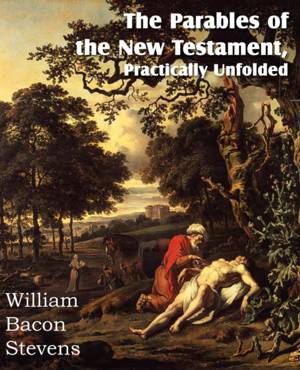
- Afhalen na 1 uur in een winkel met voorraad
- Gratis thuislevering in België vanaf € 30
- Ruim aanbod met 7 miljoen producten
- Afhalen na 1 uur in een winkel met voorraad
- Gratis thuislevering in België vanaf € 30
- Ruim aanbod met 7 miljoen producten
Zoeken
€ 25,45
+ 50 punten
Omschrijving
This work is designed to be, as its title indicates, a practical unfolding of the Parables of our Lord. William Bacon Stevens has kept steadily in view his original aim, and believing that there is a deep spiritual meaning in each one of these similitudes, which it befits us as Christians to know and understand - he has sought to develop this with clearness and fidelity. If he shall be the means of alluring others to a more earnest study of these inimitable Parables, these "apples of gold in pictures of silver," and to a better understanding of their precepts and doctrine - he shall devoutly thank God, and feel that his labor has not been in vain in the Lord. William Bacon Stevens was the fourth Bishop of the Episcopal Diocese of Pennsylvania. He briefly served as professor of moral philosophy at the University of Georgia prior to being called as the rector of St. Andrew's Church of Philadelphia, Pennsylvania Upon the death of The Rt. Rev'd Alonzo Potter in 1865, Stevens become Bishop of Pennsylvania. He served in that office and as bishop of the American Episcopal churches in Europe until his death in 1887.
Specificaties
Betrokkenen
- Auteur(s):
- Uitgeverij:
Inhoud
- Aantal bladzijden:
- 168
- Taal:
- Engels
Eigenschappen
- Productcode (EAN):
- 9781612036397
- Verschijningsdatum:
- 1/09/2012
- Uitvoering:
- Paperback
- Formaat:
- Trade paperback (VS)
- Afmetingen:
- 190 mm x 235 mm
- Gewicht:
- 299 g

Alleen bij Standaard Boekhandel
+ 50 punten op je klantenkaart van Standaard Boekhandel
Beoordelingen
We publiceren alleen reviews die voldoen aan de voorwaarden voor reviews. Bekijk onze voorwaarden voor reviews.








